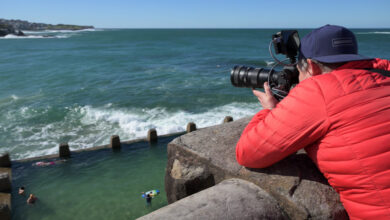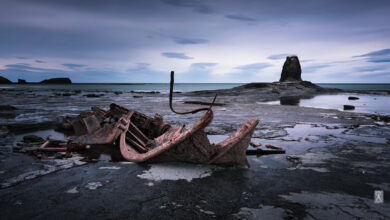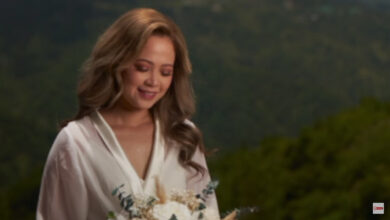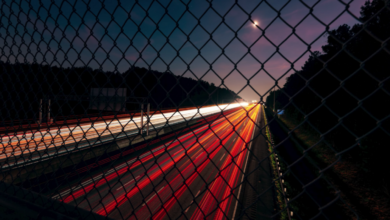We review the Canon EOS R8 . Mirrorless Full Frame Camera
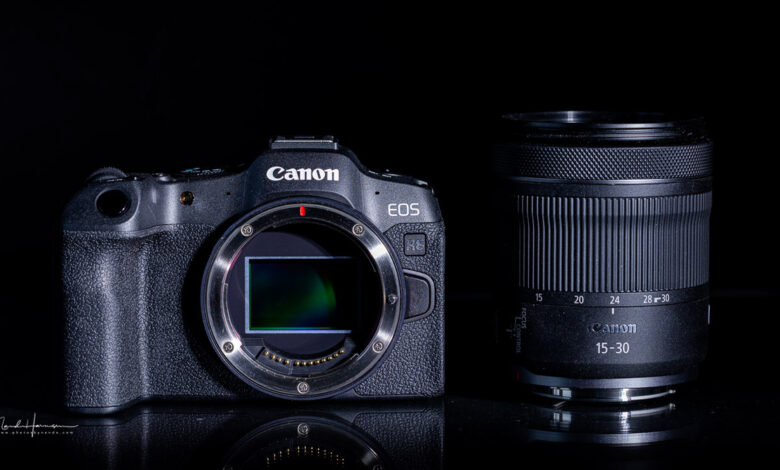
The new Canon EOS R8 mirrorless camera can be seen as a replacement for the older EOS R and EOS RP cameras. It promises to be a great camera at a reasonable price. Canon Netherlands sent me this camera for review. Find out how it works.
Canon’s first full-frame mirrorless camera was the EOS R. While it’s not a bad camera, there are still some minor issues, not to mention the terrible swipe button. Soon after, the Canon EOS RP appeared, a smaller and cheaper alternative.
Now Canon has released the EOS R8, which can be considered the replacement of the EOS R and perhaps the EOS RP. It’s a small 24-megapixel mirrorless camera with a CMOS sensor and lots of great features that make it quite an interesting camera.
Some specifications
- 24-megapixel CMOS full-frame sensor
- Body, face and eye detection and tracking for humans and animals
- Vehicle detection and tracking
- 3-inch fully articulated display with approximately 1.62 million dots
- 2.34 million-dot OLED electronic viewfinder with 100% coverage
- 6 fps continues with mechanical shutter
- Up to 40 fps with electronic shutter
- Raw continuous shooting up to 30 fps with 0.5 second pre-shot time
- Capture 4K 60p video from 6K with 10-bit C-log3 or HDR PQ
- Wrong color display when recording movies
- Weighs only 461 grams, including battery
Looking at the options, Canon EOS R8 seems to be a very capable camera indeed. It can even be a strong competitor for Canon EOS R6 or EOS R6 Mark II. Although the EOS R8 can be a much cheaper and perfect alternative.
camera body
Canon has done EOS R8 a really small and light camera. It measures only 133 x 86 x 70 mm without the lens and weighs only 461 grams. Perhaps users with large hands will find the camera a bit small despite the well-balanced grip.
Just like other inexpensive EOS cameras, the EOS R8 doesn’t have a ring on the back. Instead, it has a four-way button. But it does have a dial for your thumb and forefinger on the top plate, as you might expect. If you want direct access to the three exposure settings, you need to use the programmable multifunction dial on the lens for the third exposure setting.
While you can customize many of the buttons, the M-Fn button offers a customizable quick menu that lets you access the camera’s most important functions quickly and easily. The Q button can also be used to access most settings on the touchscreen.
On the left shoulder, you find a large switch to change from stills to video. The power switch itself is located around the PASM dial and also offers a lock setting to disable the selection of buttons and dials. The Canon EOS R8 features a beautiful 3-inch fully articulating LCD display with a pixel count of 1.62 million. It’s the famous touchscreen that Canon provides for all its modern cameras. It can also be used to set the AF point, which is important because a joystick is not available.
Connectivity, Battery and Memory Card
The battery compartment is located at the bottom. Powered by a smaller LP-E17 battery with a CIP rating of only 150 shots with the electronic viewfinder and 220 shots with the LCD monitor only. This can go up to 370 to 440 shots, depending on the power setting. A spare battery is recommended. Take note, the camera can also be charged via the USB-C port. The EOS R8 accepts a single UHS-II SD card, located next to the battery.
Connectivity of the EOS R8 includes a micro HDMI port, a USB-C port, a microphone, and a headphone jack. The hot shoe features connectors for adding additional accessories such as an XLR adapter, allowing you to record the in-camera four-channel audio input.
Not much to say about the menu. For those familiar with Canon, the menu should come as no surprise. It has the same layout as all other EOS models, with a clear distinction between the different options. Menus can be operated by buttons and dials or by touch screen.
The most used menu options can be gathered in individual menus for quick access. If you are new to the various settings, Canon also provides a help function and an explanation screen. Just turn them off if you don’t need them. Like most cameras at this price point, there are also plenty of creative options available. Of course, these options are only available when shooting JPEG images in-camera.
Autofocus and speed
The autofocus is responsive and finds human, dog and bird eyes without issue. It keeps the subject perfectly in focus during fast action, and with the high speed setting, you can get the shot you want in most situations. Changing settings might not be as quick as the much more expensive Canon EOS R6 Mark II, but with a little preparation it shouldn’t matter.
The electronic shutter delivers a stunning 40 frames per second. The raw continuous shooting option is limited to 30 frames per second, but it can record half a second before you fully press the shutter. This is about 15 shots at 30fps of the raw burst option. Because this option will save the image in a special file format, you will need to decompress the image before you can use it. You can choose between raw, JPEG or 10-bit HEIF format.
With the electronic shutter, there is always a risk of a rolling shutter effect. Canon issues a warning about this risk when you activate the electronic shutter. Although there was a bit of a rolling shutter, I didn’t find it too disturbing in the situations I encountered. If you want to block all the effects together, you need to switch to a mechanical shutter. In that case, the maximum speed will be limited to 6 fps.
ISO Performance and Dynamic Range
I was really surprised with the camera’s ISO and dynamic range performance. While it’s best to avoid an excessive rebound of darkness, there are situations that cannot be avoided. I found the Canon EOS R8 can restore up to four stops without issue. You can go up to six stops if you accept a little noise.
At high ISOs, the Canon EOS R8 holds up pretty well. I would have no problem using ISO 6,400 or even 12,800. At high ISO settings, you will experience a significant amount of noise when it comes to restoring shadows. But as long as the exposure is correct, the EOS R8 should do just fine.
Canon RF 15-30mm f/4.5-6.3 IS STM
I also had a chance to use RF 15-30mm f/4.5-6.3 IS STM Glass. This wide-angle lens is much smaller than RF 14-35mm f/4L IS USM and much bigger RF 15-35mm f/2.8L IS USM. The lens has two switches on the side, one to disable stabilization, the other to change the operation of the control ring. You can choose between manual focus or a function specified in the camera menu.
This small and lightweight lens can be the perfect choice for photographing architectural or landscape subjects, although it’s not limited to that use. At 15mm, normal wide-angle distortion occurs, but aside from that, there isn’t much visible lens distortion. Of course, most of the distortion will be eliminated with the lens correction option activated in the camera menu.
When facing a direct light source, some light rays will be visible. This can be quite strong, depending on the location of the light source and its brightness. If you look closely, you will notice some chromatic aberration. Calibrating the camera’s lens will fix most of it.
If you’re worried about maximum aperture, don’t worry. Most of the time, a large depth of field is used with these focal lengths. If you are going to shoot in a dark environment, then this lens is not the best choice. Also, if there is not enough light, the AF may show a bit of image panting. This will also depend on the AF sensitivity of the camera you are using.
my conclusion
The Canon EOS R8 Turns out to be a great camera. If you consider this camera a replacement for your EOS R and EOS RP, then you don’t need to think twice. Autofocus is fantastic, customizable to your needs, and fast enough to capture most of the action. The sensor works fine at all ISO settings. Just think of the EOS R8 as a miniature Canon EOS R6 Mark II at a very attractive price point.
However, the EOS R8 is not the EOS R6 Mark II. The build is less sturdy, and due to its small size the buttons and dials are limited and the layout less convenient. Additionally, you get a smaller battery with the EOS R8, which has only one card slot and no IBIS available.
Still, the EOS R8 is an incredible camera full of options that make it fun to use. You won’t miss options like excellent autofocus, continuous tracking and speed. It also has many other options, such as in-camera multiple raw exposure, time lapse, interval, bulb timer, and focus stacking.
Despite being a small camera, with a limited number of dials and buttons compared to its more expensive cousins, it’s a convenient camera to use. The M-Fn menu provides the best way to quickly access the most important settings. Since there is no joystick, you have to rely on the touch screen to set the AF point manually.
If you are looking for a full frame camera at a reasonable price without spending a lot of money, then I think the EOS R8 is a perfect camera for you. I can recommend it.
What I Like
- Good and well designed handle
- Weatherproof construction
- Fast and responsive autofocus tracking
- High-speed shooting up to 40 fps
- Pre-shot available in raw burst mode
- ISO performance
- dynamic range
- Great touch screen
- Video options (although not tested)
- Focus on compensating for breathing
- Can be used as a webcam
What I don’t like
- Battery life
- No controller needed
- Memory card location next to battery
- Position of the AF-ON button (possibly due to small form factor)
- No IBIS
How about videos?
You’ll notice how I omitted the video options. This is because I haven’t had any chance to try out the video capabilities. However, a few video possibilities are worth mentioning. The Canon EOS R8 lets you shoot 4K 60p video from a single 6K shot. If you switch to full HD, up to 180p can be recorded without sound.
Video recording can be done at 10-bit C-log3 or HDR-PQ, and there’s an option for pseudo-color and zebra overlays. With an XLR adapter connected to the multifunction dock, you can record four-track stereo sound. Unfortunately, but not surprisingly, the EOS R8 has a micro HDMI port. Overall, the EOS R8 looks well-equipped for video.
Exhibition room
Buy
You can buy Canon EOS R8 here.
